In the closing years of the 19th century, Spanish attempts to suppress rebellion in Cuba led to increasing tension with the US, tensions that led to war after the battleship Maine was destroyed in Havana Harbor. The Americans declared war a few weeks later and immediately blockaded Cuba, while the Spanish dispatched a fleet to the Caribbean in hopes of breaking the blockade. The fleets first clashed in the Far East, as Admiral Dewey destroyed the Spanish Fleet at Manila Bay. But the main action would be in the Caribbean, where the fate of Spain's empire in the New World hung in the balance.
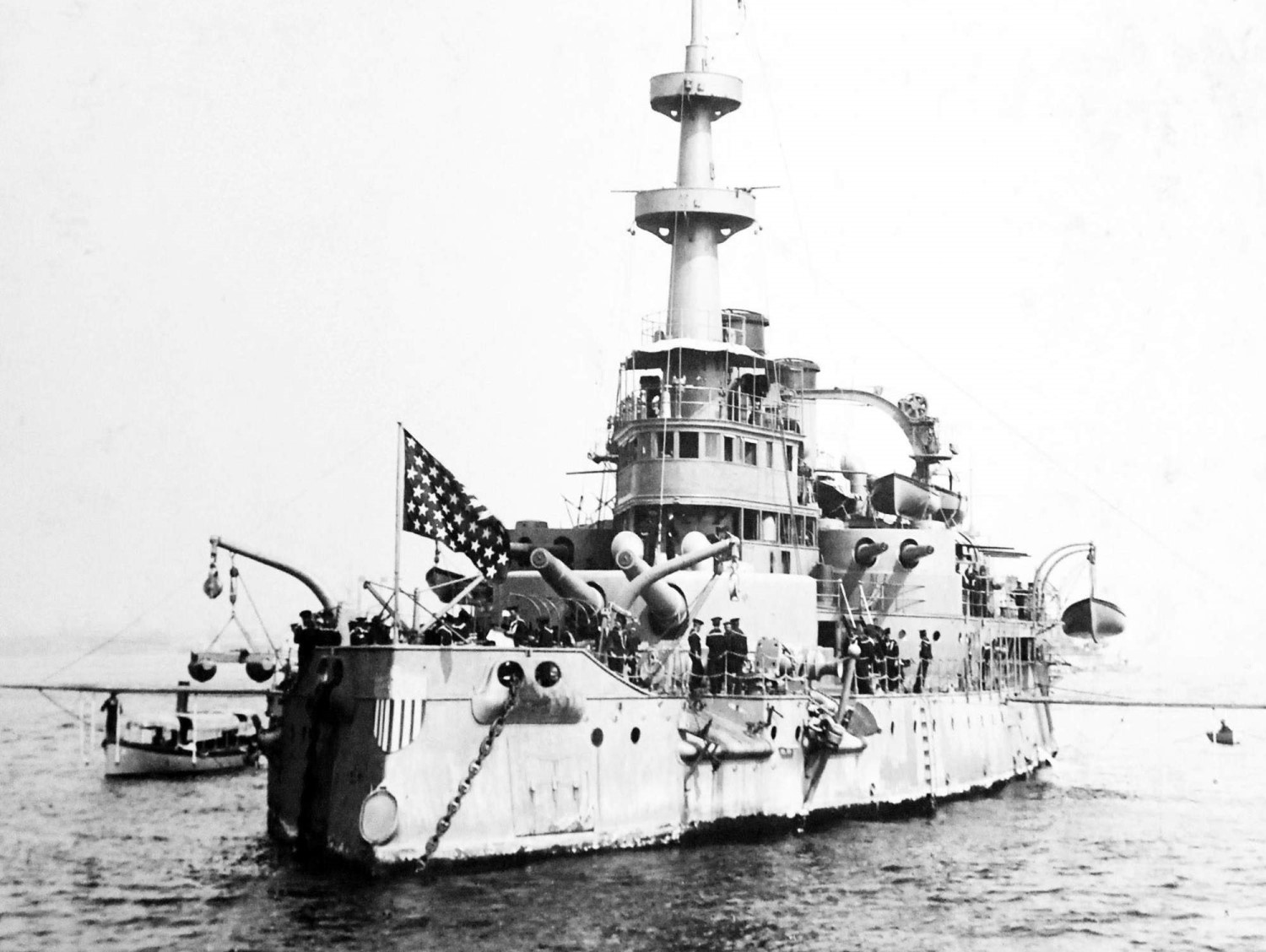
Oregon about to depart San Francisco for the Caribbean
On paper, the two fleets looked reasonably closely matched, so the Americans called in what reinforcements they could find. In mid-March, orders were given for the battleship Oregon, on the West Coast, to round South America and join the forces in the Caribbean. She departed San Francisco on March 19th, reaching the Straits of Magellan a month later with only a single coaling stop in Peru. On April 30th, she reached Rio de Janeiro, where she learned that Spain and the US were now at war. There were serious fears that the Spanish would intercept the ship, whose progress was followed by the media, potentially dealing a major blow to the USN. Captain Clark of the Oregon took measures to thwart any such interception, including faking a breakdown at the Brazilian port of Bahia, then taking to sea again, but Admiral Cervera, commander of the Spanish fleet, did not even make the attempt. After a final stop in Barbados, she arrived at Jupiter Inlet, Florida, on May 24th, having covered 14,700 nautical miles in only 66 days and an average speed of 11.6 kts while at sea, a remarkable achievement for the time.1

Spanish cruisers Cristobal Colon and Vizcaya at Cape Verde
On May 4th, while Oregon was still en route, Admiral Sampson, in command of the American blockading fleet, set off with some of his ships for the Windward passage at the east end of Cuba to intercept the Spanish under Admiral Cervera, whose fleet had sortied from the Cape Verde Islands five days previously. This force included the battleships Iowa and Indiana, armored cruiser New York, monitors Amphitrite and Terror, cruisers Detroit and Montgomery and the torpedo boat Porter. To extend the range of his short-legged monitors, he had them towed by Iowa and New York. This was not a particularly successful plan, as the towing ropes parted four times in the first two days at sea. Despite these and other problems, Sampson decided to head for Puerto Rico, Cervera's most likely port of call in the Caribbean, and blockade San Juan.
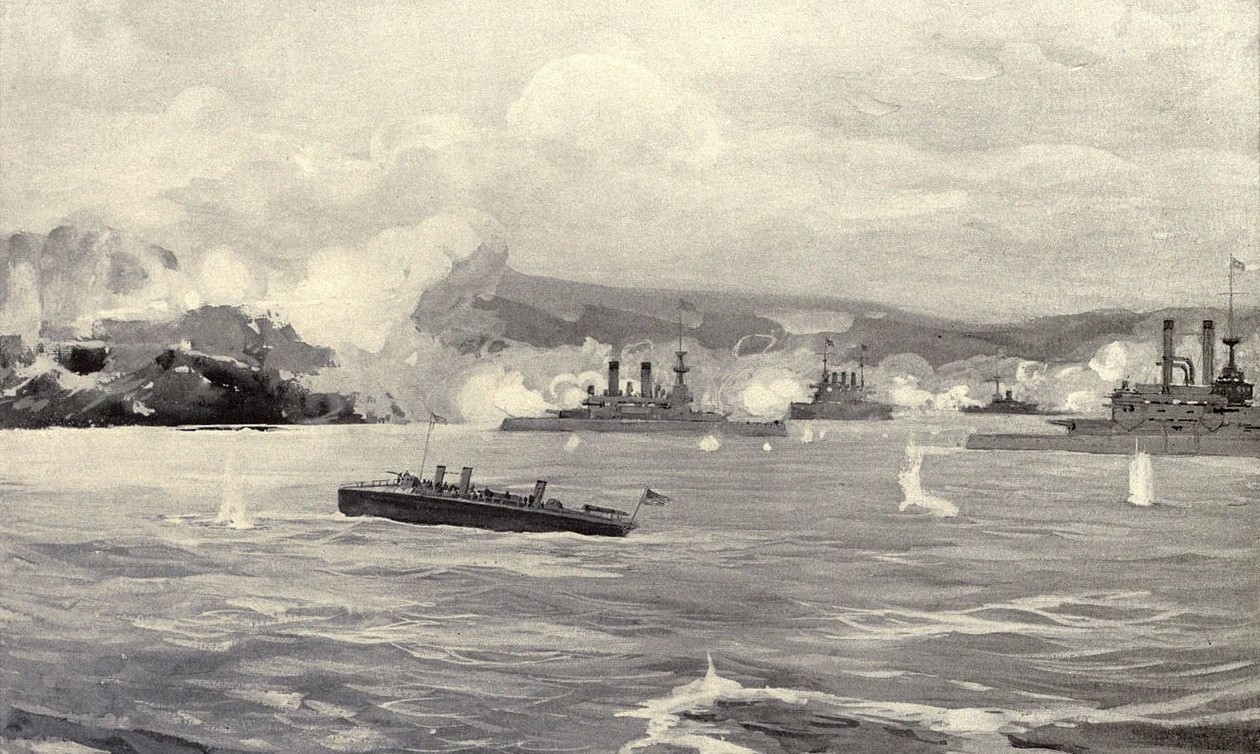
Sampson's ships bombarding San Juan
His force arrived off the city at dawn on May 12th, and stood in towards the harbor, hoping to discern if Cervera's ships were present. At 0517, Sampson, flying his flag from Iowa,2 ordered fire to be opened on the Morro, high on the bluffs overhead. The Americans fired unopposed for eight minutes before the Spanish began to reply. Neither side's gunners came out of the 3-hour engagement looking very good. The Americans were hindered by a heavy swell and clouds of dense powder smoke that often obscured the target. Even when they could get close, their shells often fell at the base of the bluff, their fire-control equipment unable to compensate for the height of the Morro. When they overcame this problem, many of their shells landed beyond their target, often in San Juan itself. Despite their firm footing, the Spanish did little better, landing only a few hits, one on New York that killed a single man and wounded four more, and one on Iowa that wounded three, although fragments just missed Admiral Sampson. Both of Amphitrite's turrets broke down, and the heat inside was so intense that one of her gunner's mates died. The effects on shore were only slightly greater. Two members of the Spanish garrison and five civilians were killed, and a few dozen wounded, but the Spanish guns remained in action. Ultimately, Sampson was able to get a good look at the inner harbor, and note the distinct lack of heavy warships. He thus withdrew and turned his fleet west.
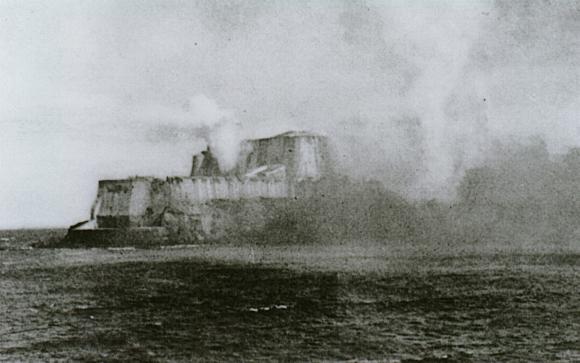
Morro Castle during the bombardment
The Spanish squadron had first been sighted the previous day, off Martinique. Their passage had not been swift, averaging only about 7 knots, due to machinery breakdowns and the need to tow their destroyers. Cervera's fleet was low on coal, and sent a destroyer ashore to determine if he could refuel from the French colony. Several converted liners had been dispatched to watch the approaches to the Caribbean, and one of them, Harvard, was in the harbor when Cervera's fleet arrived. Her captain promptly telegraphed the news to Washington and Key West, confirming that Cervera was heading for the Caribbean, and not for the US mainland. The Navy promptly ordered the Flying Squadron, which had been held at Hampton Roads, Virginia, to counter that threat, south to Charleston. Cervera kept his ships offshore, and left Martinique on the 12th, bound for Curacao, off the coast of Venezuela. The Dutch allowed him to send two of his cruisers into port when he arrived on the 14th, but he was only able to procure 500 tons of low-quality coal. His presence there was reported by the American consul, and the Flying Squadron was dispatched immediately to Key West.
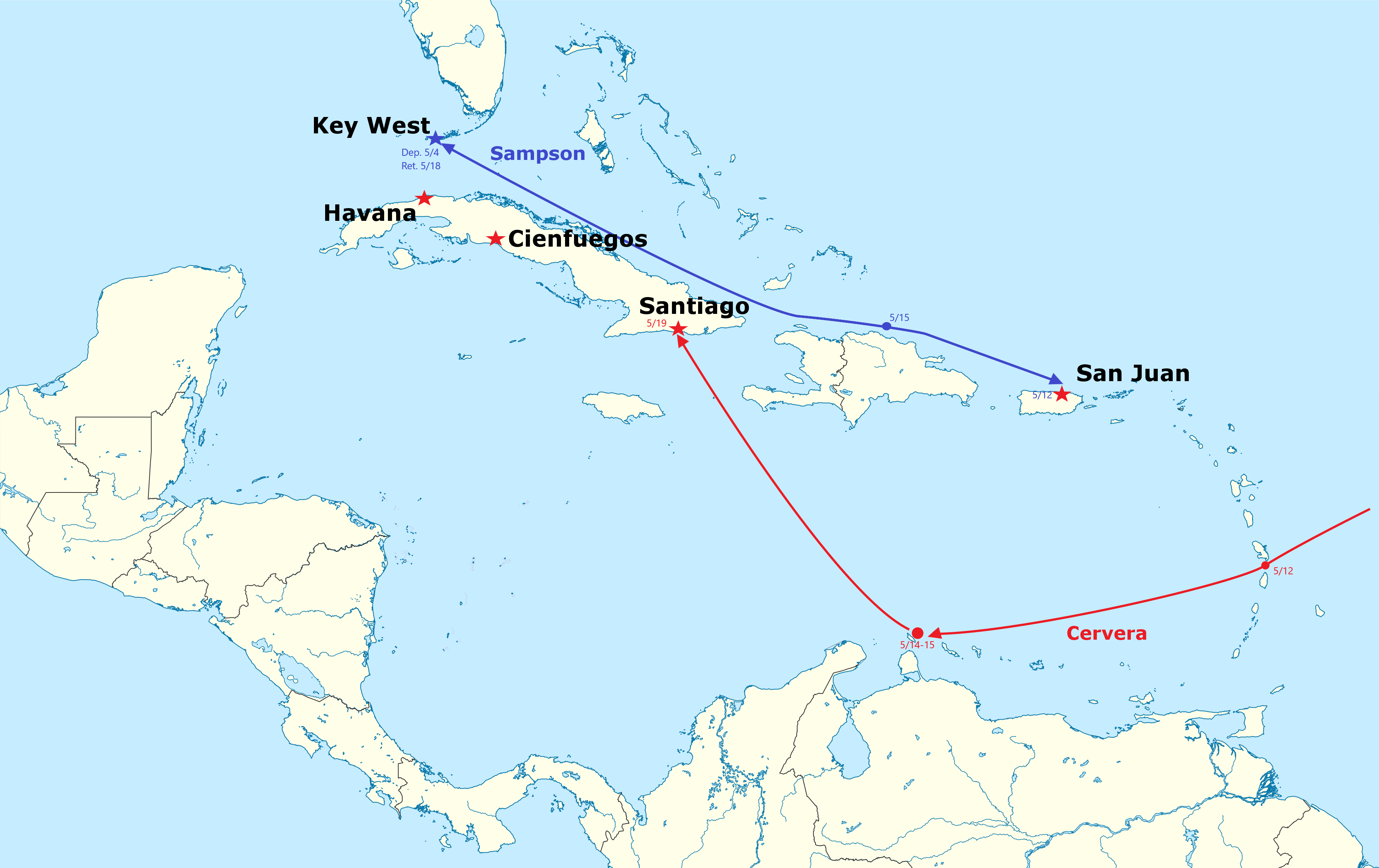
The movements of Cervera's and Sampson's fleets through May 19th
On the 15th, Cervera learned of the bombardment of San Juan, and correctly guessed that the American fleet would not be in any position to interfere with his arrival at one of the ports on the southern coast of Cuba, either Cienfuegos or Santiago, and the former was the better port. However, the 900 nautical miles to Cienfuegos was apparently too great a distance for his depleted coal supply, and so he steered for Santiago, only two-thirds of that distance away. The Spanish government had contracted colliers to resupply him, but none had managed to reach his fleet in time, and his own progress was hampered by the poor material condition of his fleet. Observers at Curacao noted the fouling on his ships, and his boilers and engines were giving trouble, but he managed to reach Santiago on the 19th. His fleet narrowly missed the armed liner St. Louis, off Santiago to cut the undersea cables and isolate the city from outside communications.
Sampson learned of Cervera's presence at Curacao on the 15th, although he believed that Cervera would coal on the Venezuelan coast instead of making straight for Cuba. He correctly surmised that the Spanish would make for the southern ports, although he suspected Cienfuegos would be their destination. The Flying Squadron, under Commodore Schley, would be sent to blockade that port, while Sampson kept his force near Havana, in case the Spanish attempted to break the blockade. Both American squadrons reached Key West on the 18th, and Schley sailed for Cuba the next day, only an hour after Cervera had dropped anchor.
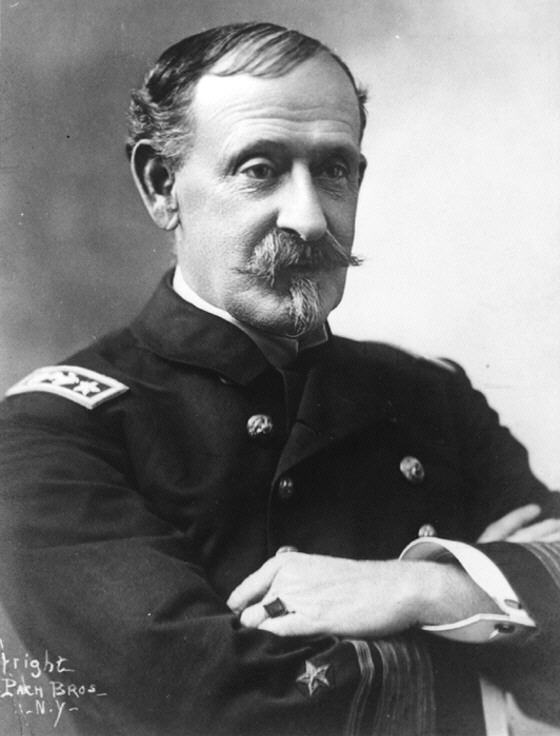
Commodore Winfield Scott Schley
By late on the 19th, news that Cervera was in Santiago had reached Washington, and the next day, Sampson dispatched Iowa to rendezvous with Schley's squadron and sent a letter that stated he was to remain off Cienfuegos until the Spanish fleet had been definitely located, as Cervera might have steamed from Santiago in the 3 days it took the letter to reach Schley. On the 21st, confirmation arrived of Cervera's location, and Sampson sent a cruiser with orders to move against Santiago, provided Schley was "satisfied they are not at Cienfuegos", followed shortly by another set of orders that he was to move immediately to Santiago, leaving before dawn on the morning of the 23rd, when the orders were expected to reach Schley. The Flying Squadron was off Cienfuegos early the next morning, but the geography of the harbor prevented them from seeing inside, and Schley became convinced that he had indeed located Cervera. Sampson's letters arrived on the 23rd, but Schley decided to ignore the last set of orders in favor of remaining off Cienfuegos. This lasted until late on the 24th, when he finally decided to move east to Santiago. His progress was delayed by bad weather and the low speed of some of his ships, and he didn't reach Santiago until the 26th, a full week after Cervera arrived. Fortunately, his sloth was exceeded by that of the Spanish fleet, and the enemy cruisers were still in the port.3
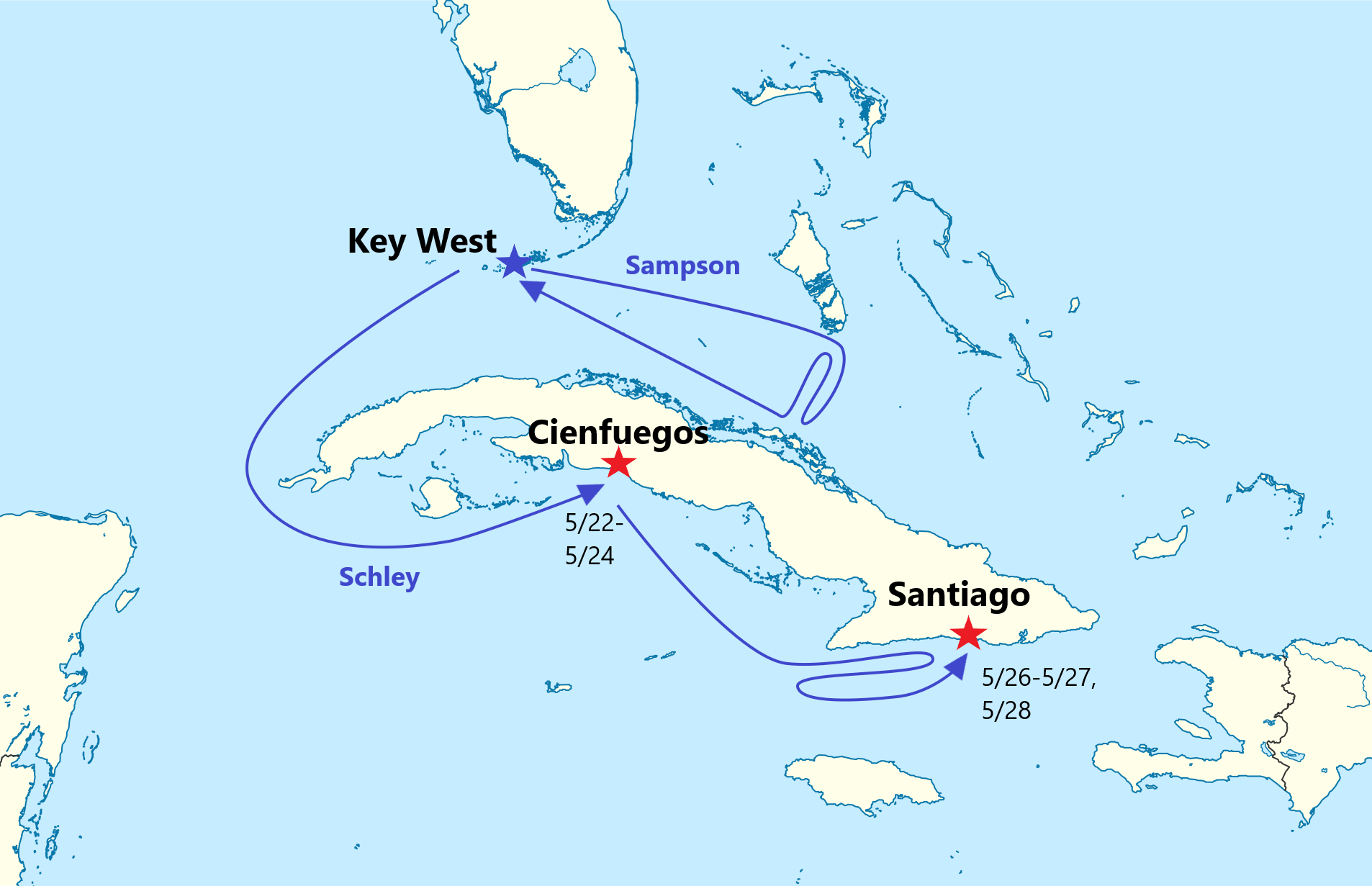
The course of the American fleet, 5/19-5/28
As soon as he sent orders to Schley, Sampson got his own force moving, taking up station in the Bahama Channel to the east of Havana. He couldn't risk moving to combine with Schley for fear of leaving Havana uncovered in case the Spanish slipped past him to the west, so he was forced to wait for news. On the 26th, he learned that Schley hadn't been off Santiago on the 23rd, and the next day, Schley's dispatches from Cienfuegos reached him, with the information that the Spanish were not in that port, but that Schley would be unable to blockade Santiago for want of coal. Sampson returned to Key West, where he found Oregon waiting to join his force, but also another message from Schley. He had been unable to confirm the presence of Cervera's ships at Santiago on the 26th, and had instead decided to abandon the blockade and return to Key West for coal.
This was a very odd course of action, and one gets the impression from Schley's conduct throughout the campaign that he didn't really understand that the main prize was the Spanish Fleet.4 If it was located and bottled up, the US gained control of the sea around Cuba, while a Spanish fleet on the loose meant that any action not covered by heavy warships was tenuous at best. Mahan had seen this clearly, and his thinking formed the basis of US doctrine. I can only conclude that Schley fell into the all-too-common trap of treating the preservation of his fleet as the main objective, instead of seeking actual victory.
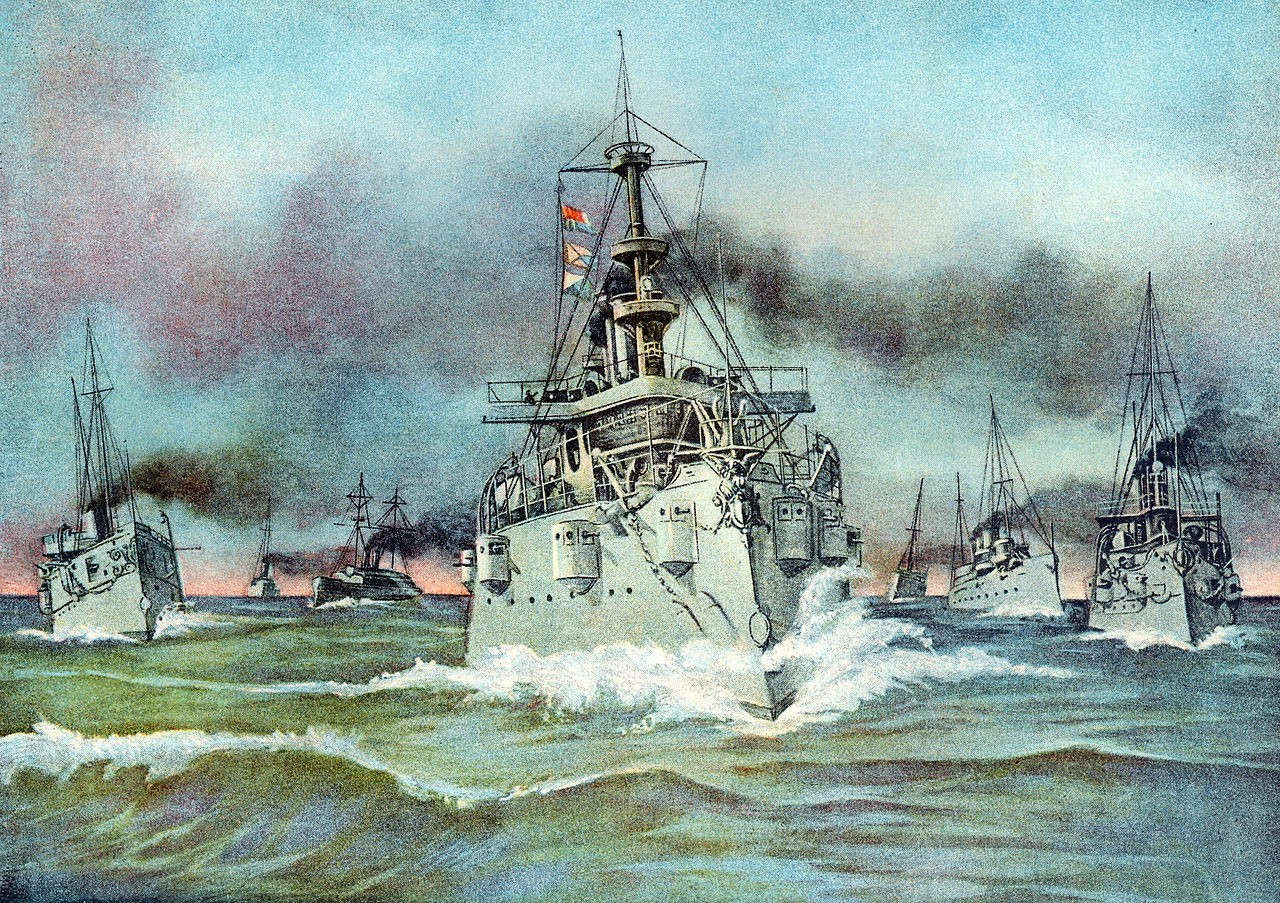
Schley's Flying Squadron
Schley's departure was delayed by the failure of the collier Merrimac's engines,5 which kept him off Santiago for another 24 hours. During this time, more orders to keep Cervera bottled up arrived, and to confirm his presence by communicating with the Cuban rebels, along with news that coal was being dispatched to Haiti for Schley's force. He disregarded these new orders, and on the afternoon of the 27th, pulled out for Key West, with Merrimac under tow. That evening, the weather quieted, and he was able to coal his ships at sea. With his fears of empty bunkers dispelled, he returned to Santiago, and at 6 PM on May 28th, American warships appeared again off Santiago, there to stay until the defeat of the Spanish.
While the Americans had finally found and fixed Cervera, they would struggle to keep him there. Santiago was a very long way from Key West, and coaling at sea was difficult and subject to the vagaries of weather. If the blockade was to be maintained, a closer base would be needed, and we'll look at its acquisition next time.
1 This voyage would later prove an important inspiration for both the first leg of the Great White Fleet's cruise and the construction of the Panama Canal. ⇑
2 And thus proving that he had excellent taste in warships. ⇑
3 In fairness to Schley, the communications technology of the day created exceedingly odd situations. Telegraph cables girdled the globe, but ships at sea were as isolated as they had been for millennia. As a result, Sampson in Key West had a much better picture of what the enemy was doing than any commander had ever had, but any orders he passed might take days to reach the fleet at sea, during which time the situation could have changed. Ships often anchored off neutral telegraph stations, and various commandeered yachts and liners were used as dispatch boats, running messages between said stations (Jamaica and Haiti were the main stations for ships off Santiago, for instance) and the fleet. Fortunately for the Americans, the Spanish were unable to react fast enough to take advantage of their communications problems. ⇑
4 I will admit that my primary source, The Downfall of Spain, seems very pro-Sampson, and I could be reading bias from it. That said, Schley hardly covered himself in glory during this phase of the war. ⇑
5 Yes, Schley had a collier, full of coal for his forces. The weather had been too rough for coaling at sea, but he could have easily found somewhere closer than Key West to set up a forward base, or just waited for the weather to improve. ⇑

Comments
there's a spurious n at the end
and there's a second f missing
Ack. I shall have to reprimand the proofreading staff. Thanks for catching that.